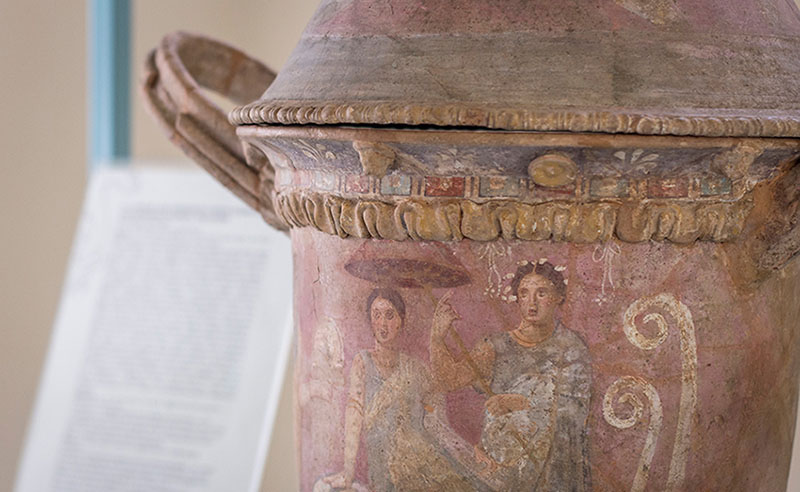Museum of Archaeology

Scientific Coordinator: prof. Nicola Laneri
The opening of UNICT’s Museum of Archaeology took place on October 17th 2015, on the first floor of Palazzo Ingrassia, in via Biblioteca, Catania.
The history of this museum begins in 1898 when Paolo Orsi, at the time Coordinator of the Royal Archaeological Museum of Syracuse, gave to the then emerging Department of Archaeology a batch of ten antiquities from the excavations that took place in Megara Hyblaea. Today’s museum houses Guido Libertini’s collection, who once was the first professor of Archaeology at UNICT (since 1923), the dean at the faculty of letters (1937-1939) and then the university’s rector (1947-1950). Sometime between the twenties and the forties of the twentieth century, Guido Libertini, who had been conducting a key study, donated some valuable finds to UNICT. From excavations, he had found some important material of the Greco-Roman period (mostly in Centuripe and some in the Etna area).
The museum's collection is distributed across five exhibition halls where antiquities are arranged according to an ideal timeline, from prehistory to the Middle Ages. A collection of fakes from Centuripe is on display at the very end, merging with echoes of alleged authenticity in the Italian history of art, relating a somewhat huge controversy over it.
The museum's activities are under the scientific supervision of prof. Nicola Laneri and managed by Officine Culturali, an outsourced organization that has been in place for some time since 2009, working for the enhancement of Catania’s cultural heritage while ensuring that students from the humanities receive proper training for the museum’s opening service every Monday, Wednesday and Friday.
Information and Admission
Temporarily closed to the public